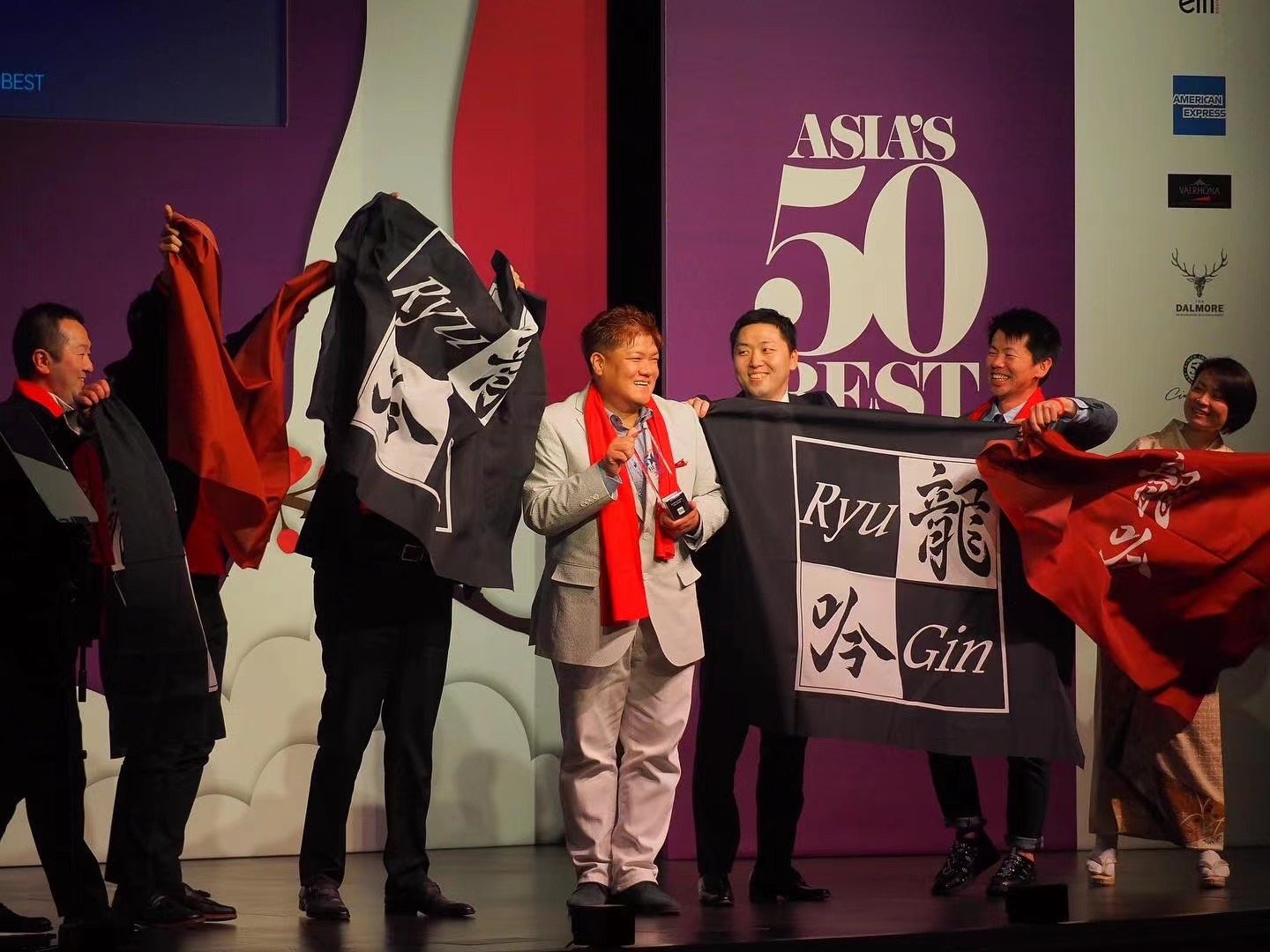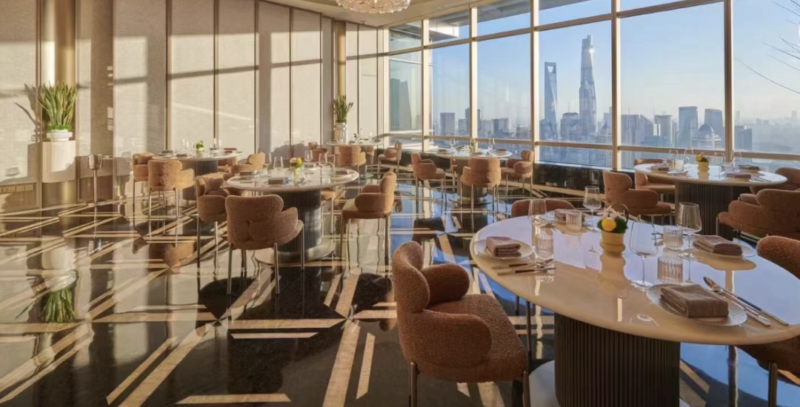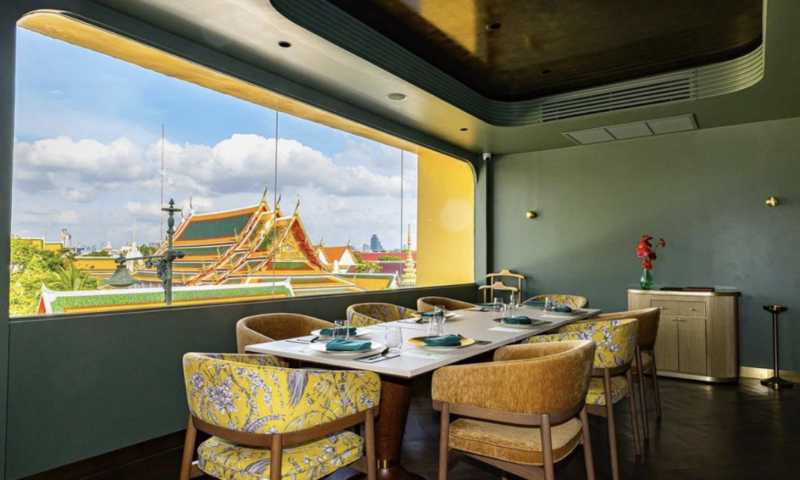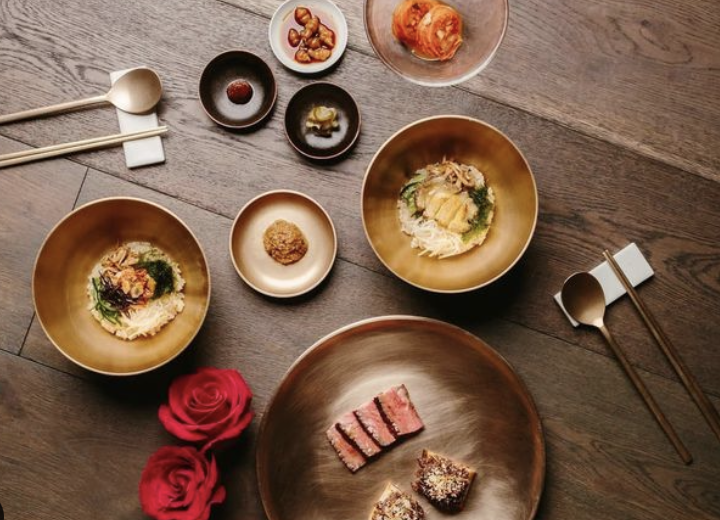On another visit to RyuGin Taipei, what remained the same was the flashback of the iced Jinxuan oolong tea exuding a slightly creamy scent when waiting for the meal.
One thing different was Chef Ryohei Hieda’s approach to his dishes, which was bolder, yielding more individuality and more pronounced Taiwanese flavour.

Entering the ninth year in Taipei since he traveled from Tokyo back in early 2014, Chef Ryohei Hieda is among the first of the new-generation Japanese chefs living in Taiwan. As one of the foreign chefs to have unearthed some of the best ingredients that even locals didn’t know about, Ryohei Hieda has pioneered a brand new perspective where he believes that the quality and variety of vegetables in Taiwan are well suited to Japanese cuisine. Before opening Shoun RyuGin, Ryohei Hieda and Seiji Yamamoto, founder of Tokyo RyuGin travelled around the island in search of the best regional produce, hoping to deliver similarly creative cuisine leveraging the richness and diversity of local ingredients.
The trend of discovering local ingredients has influenced many Japanese chefs who have since come to Taiwan. Ingredients so common to the Taiwanese table, like the much-liked Ayu sweetfish, became transformed once they entered RyuGin’s kitchen. RyuGin’s strength lies also in its generous budget and its ability to source higher quality ingredients.
It was an early September day when I visited. The overall service was as warm and smooth as ever, and I ordered sake and accompanying wine as usual. The first starter was a nutty peanut tofu, topped with sweet ripe fig and presented in a floral bloom. Served with dashi and ginger sauce, the starter was refreshing and tempting.
Next was kombu-marinated grape shrimp from Guishan Island, wrapped in a shiso leaf and paired with tofu skin and mashed edamame. Although the garnish of Guguan caviar didn’t seem to add much to the final result, the light-hearted flavouring and the crunchy shrimp were already appetising.


The abalone and lotus root cake was unique in plating. The soft lotus root and tender steamed abalone were accompanied by abalone liver paste and garnished with leek blossoms. Yet the texture and layer were more satisfying than the taste. This was followed by a simple thick chunk of dashi-soaked cucumber, coupled with finely sliced squid and accented with citron zest and kombu oil to exude whiffs of summer vibe.
The wan-mono (simmered foods in dashi soup) was full of Taiwanese flavours – tilefish was steamed to perfection and served with ceylon spinach and baby corns. The addition of clams made the Japanese-style broth particularly tasty. Next was a mostly sashimi course: mackerel, bonito, lobster and chicken grunt, topped with chopped Ailanthus prickly ash, myoga and okra, and garnished with Penghu seaweed and fresh Alishan wasabi puree. For those who don’t like okra, the portion can be a challenge. Today, Shoun RyuGin is trying to convey Chef Ryohei Hieda’s creative thinking, rather than just trying to be a popular restaurant.



Mackerel, Bonito, Lobster, Chicken Grunt, Okra
The next was an unusual eel dish. Slow-cooked eel was served with rice stewed with tomatoes and a rich sauce made from eel bones along with tomato jelly to jazz up the flavour and cut through the richness of the eel. The pairing was unexpected but impressive, interesting and satisfying contrast. Sea perch was slightly char-grilled with dashi-marinated eggplant wrapped in it, sitting in a soup hinted with soy sauce and mirin and finalised with a few drops of green peppercorn oil for a lemony aroma.
Grilled black mouth croaker was served with a delicious broth made with seaweed, mussel and sea grapes, and spiced with a touch of facing heaven pepper oil. The main meat course was beef fillet, using Yunlin cattle raised on sweet potatoes, aged and char-grilled with turnips, attractively presented and allowed the excellent ingredients to speak for themselves. Both main courses were of textbook level quality in terms of doneness and completeness.




Squid, Cucumber, Citron/Beef, Wasabi
The rice dish featured a combination of Wanli flower crab, Jinhua ham, seasonal green bamboo shoots, chives, served on a bed of Yilan’s aboriginal Yuan-Ya rice, whose name comes from the ecological agriculture environment where the grains and ducks are grown and farmed together. The rice was full of lustre and earthy aroma, with a hint of sweetness that echoes the crabmeat and complements the crunchy bamboo shoots. It was beautifully cooked, and the scent of the mixed whole was intoxicating.
The ending was two desserts, modest but tasted every bit as good as they looked. Inspired by candied sweet potato, the ice cream was made from sweet potato and brown sugar stew and served with a tea jelly made from Biluochun green tea underneath. The other gorgeous dessert was a thick lotus nut soup with red beans. Classy and elegant.


The menu can be interpreted as Japanese cuisine that has been localised and is evolving, where the cooking techniques are essentially the same, but the flavouring is more local-oriented. The use of Sichuan peppercorns and facing heaven pepper oil is not common in Japanese cuisine, but “authenticity” does not seem to be a top priority in the RyuGin system.
I remember how amazed I was when I visited Nihon Ryori Ryugin in Tokyo and tried its creative kaiseki cuisine. Most of my knowledge of Chef Seiji Yamamoto comes from the NHK documentary, Two Japanese Chefs – A Taste of Life. He is a man who would still fight for victory even when he was dealt a bad hand. His pursuit of knife techniques, artistry and culinary sophistication is profound and iconic. He also has a discerning eye for selecting his “protégés”, including Hideaki Sato of the two-starred Ta Vie in Hong Kong, and Tomoya Kawada of Sazenka, a Chinese cuisine establishment recently awarded three stars. Seiji Yamamoto has influenced his disciples in many ways, and they have continued to keep close contact even after students opened their own restaurants. At Asia’s 50 Best Restaurants 2019 ceremony, when Seiji Yamamoto won the Icon Award, his students all came on stage to hold a “RyuGin” banner in honour of their celebrated culinary master.



42-year-old Ryohei Hieda embarked on his culinary journey at a very young age. At 19 years old, he entered the kitchen of Kyoto’s famous Kappou Nakagawa in Gion and in 2004 he returned to Kyushu with the purpose of learning how to make salt at Itaru. 23 years immersed in the culinary industry speaks true for his diverse background of study.
After five years of training at RyuGin Japan, Ryohei Hieda went on further studies at three-starred chef Corey Lee’s fusion restaurant Benu in San Francisco and Manresa, another three-starred restaurant in California famous for its vegetable dishes. His cross-cultural and globetrotting experience allow him to forge a constant drive to create and see Japanese cuisine from a different perspective.
The re-discovery of Taiwanese ingredients by Chef Ryohei Hieda’s has influenced many emerging chefs and local food suppliers, and has set a benchmark for fine dining restaurants using local ingredients.
Little did he know that his determination to showcase Taiwan’s beautiful produce would result in a milestone that champions the local terroir.
-END-
Author/Photo: Jocelyn 华姐











